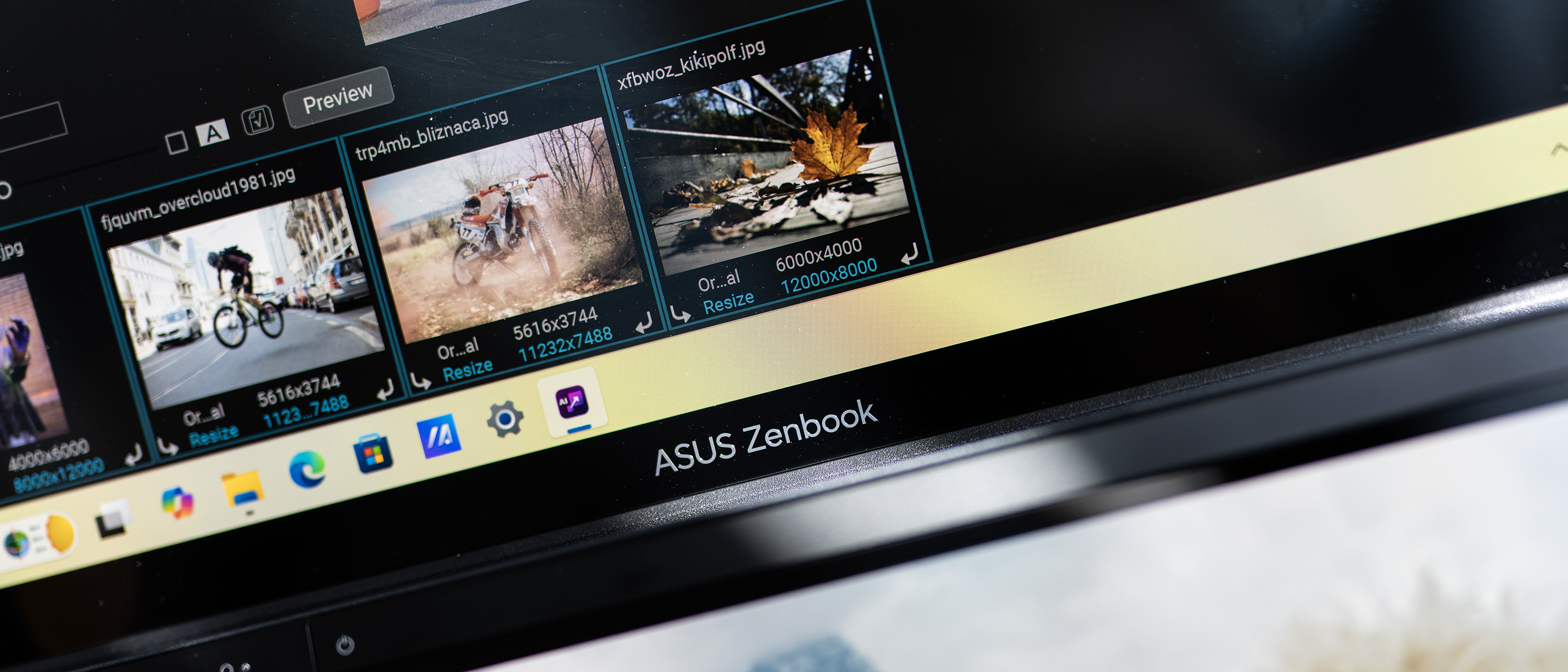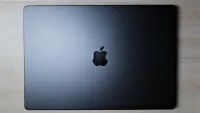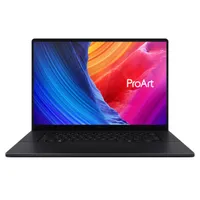Our Verdict
ASUS' gorgeous two-screened laptop returns for a 2025 refresh, and is as good as ever. That comes with a caveat though - there's still no discrete graphics chip in this baby - but if you can live with that then it’s a top-notch portable computing experience.
For
- Nippy CPU performance
- Good keyboard feel
- TWO OLED SCREENS. COUNT'EM. TWO
Against
- Uses integrated graphics
- Attracts attention
- Could have more ports, maybe
Why you can trust Creative Bloq
When the ASUS Zenbook Duo first dropped into the Creative Bloq testing labs back in 2024, we loved it. How was it possible not to adore such a mad, brilliant piece of PC engineering? Two OLED screens and a wireless keyboard that can be put together in a way that resembles a traditional laptop, then unfurled into a glorious portable workstation with enough screen space to run multiple apps at once.
It was an excellent machine, and continues to be one in this 2025 refresh, which ups the CPU to a Core Ultra 9 Arrow Lake model and... well... not much else. It’s still lacking a proper GPU, relying on the Intel integrated graphics to push both 2.8K displays and handle AI tasks, and it still costs a lot of money. But it’s worth it for one of the best graphic design laptops around...
ASUS Zenbook Duo (UX 8406) 2025 review: Key specifications
CPU | Intel Core Ultra 9 285H |
NPU | Intel AI Boost |
Graphics | Intel Arc Graphics (integrated) |
Memory | 32GB LPDDR5X |
Storage | 1TB SSD |
Screen size | 2x 14in |
Screen type | OLED |
Resolution | 2880 x 1800 x 2 |
Max refresh rate | 120Hz |
Colour gamut (measured) | 98% P3 |
Brightness (measured) | 366 nits |
Ports | 1x USB 3.2 Gen 1 Type-A, 2x Thunderbolt 4, 1x HDMI 2.1, 1x 3.5mm audio |
Wireless connectivity | Wi-Fi 7, BLuetooth 5.4 |
Dimensions | 31.35 x 21.8 x 2 cm |
Weight | 1.65 kg |
Design and build
Very little has changed on the outside of the ASUS Zenbook Duo. It still has the chunky plastic and aluminium build quality, the same pattern of lines on the lid, and is slightly thicker and heavier than you’d expect from a Core Ultra laptop - the extra screen hidden under the keyboard accounts for that, and we’re thankful that OLEDs are thinner than IPS panels for this reason (though the screens here are still a little reflective). It’s the same charcoal grey, and has the same flap on the back that keeps the screens upright when you’ve detached the keyboard.
While it may be the same as last year’s offering, that’s because it ain’t broke. The keyboard is thin and can feel a little flimsy on its own, especially as it lacks feet underneath to adjust its position. It’s a full chiclet keyboard though, with decent key travel, and is nice to type on.
Having the two screens is just the most useful thing if you’re used to a multiple-monitor desktop setup. Being able to have a browser or chat app on one side, and productivity apps on the other - plus the ability to rotate them into dual-portrait orientation if that suits your work better - is as much a revolution today as it was last year. That we’re not drowning in more laptops that ape the Zenbook Duo’s design is the big mystery here.
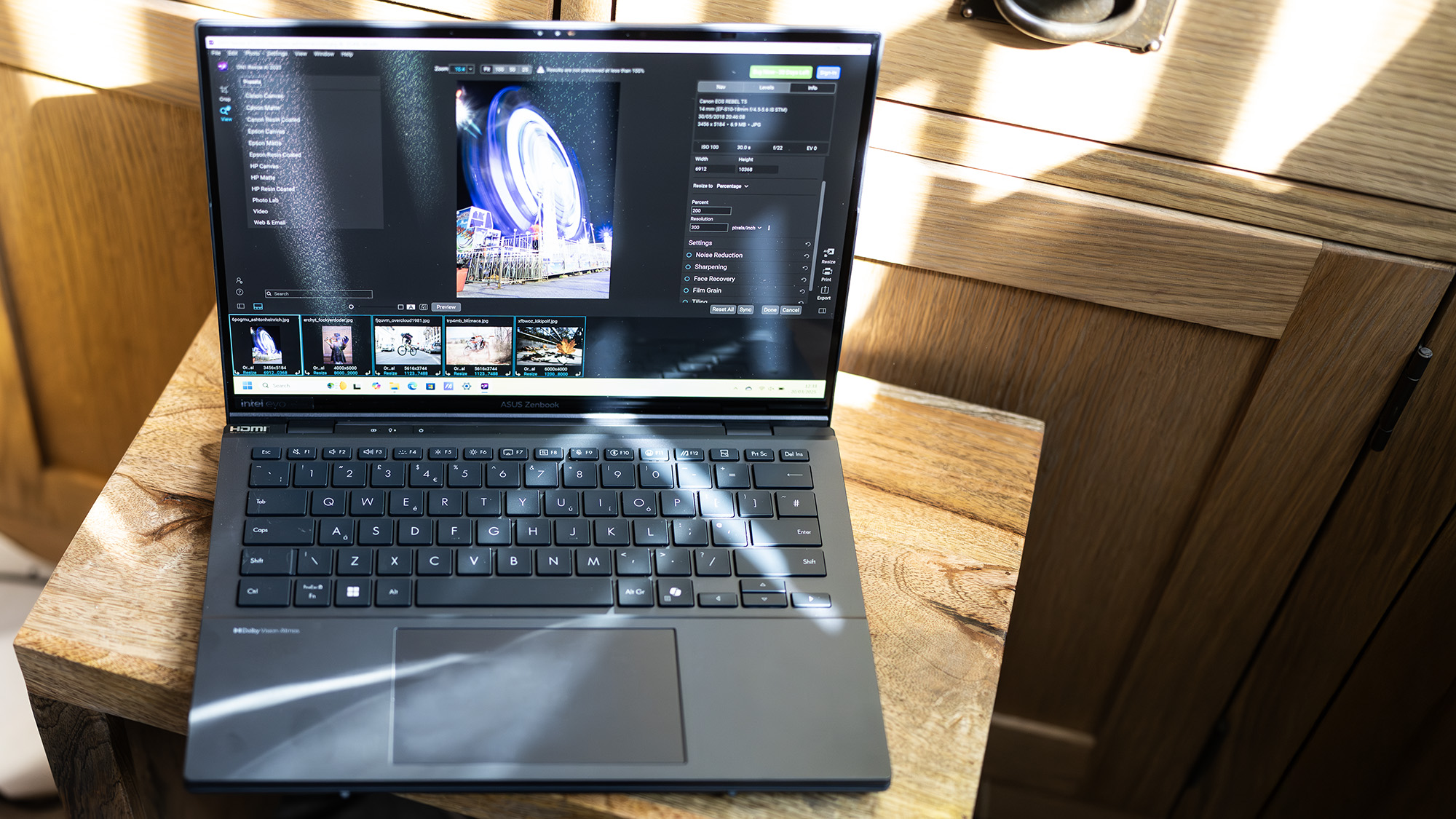
Features
One thing that, if you really wanted to, you could criticise the Zenbook Duo for is its port selection. You get a pair of Thunderbolt 4s, and an HDMI 2.1, which should be enough for most people especially as hubs are easy to come by. There's a single USB-A too, for a wireless mouse dongle. Otherwise, though, it’s bare - there's no SD card reader or dedicated charging port, which means there's a chance you’ll need to unplug something to charge or attach external storage. It’s not a huge deal, and we’re really pleased to see Thunderbolt 4 on a laptop like this - ASUS could have used 10Gbps USB-C instead. The Wi-Fi has been bumped up to Wi-Fi 7 for this release, and Bluetooth has crept up to version 5.4 too - neither of these things will make any great difference, but are nice to have anyway.
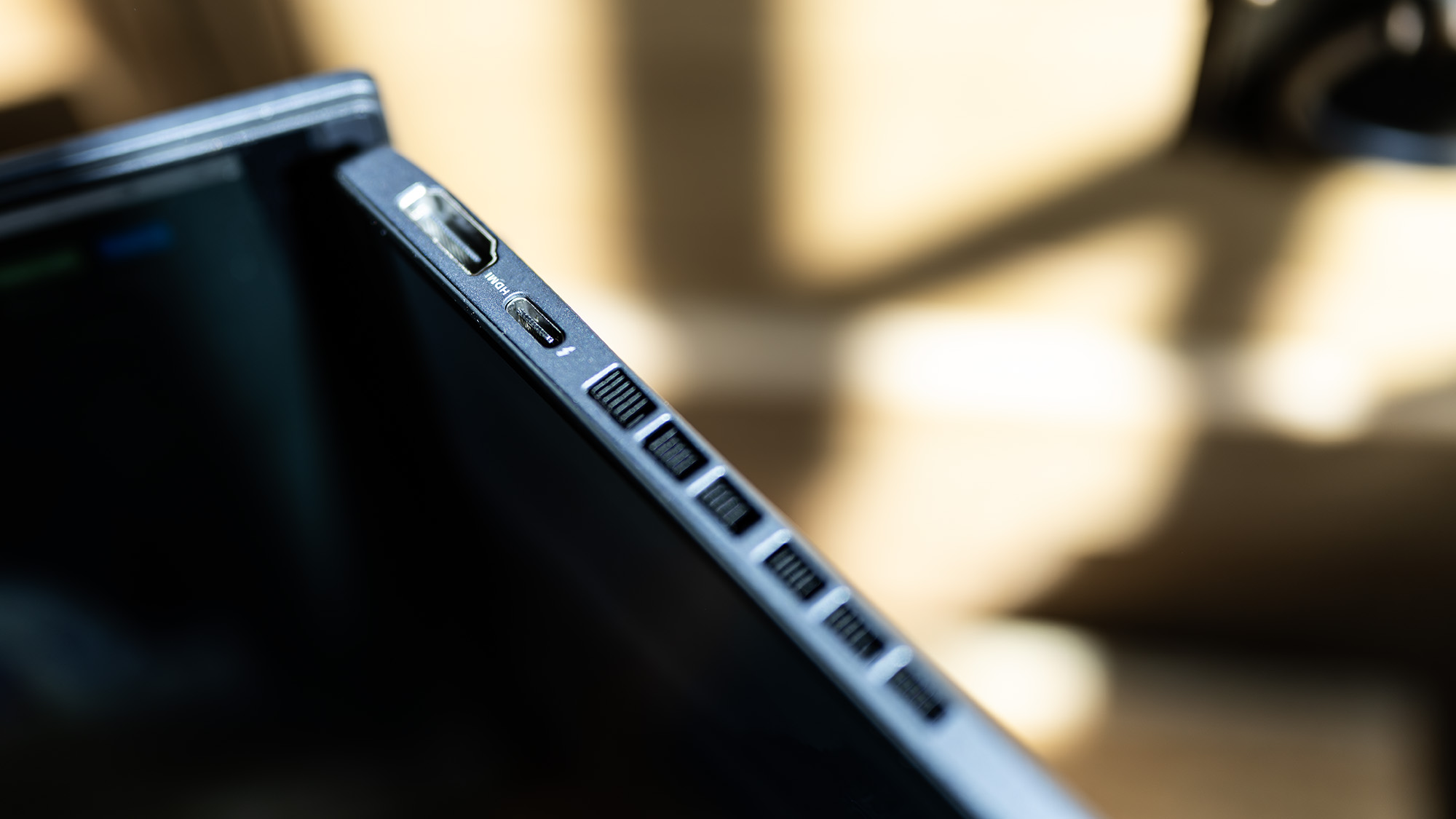
The screens are, of course, touch-sensitive, and there's an optional stylus (the ASUS Pen 2.0) you can use for digital painting, and there was one in the box we received, along with the charger. Depending on the humidity levels of your hands, it’s completely possible to cover the screens with fingerprints (they attract dust too), and as they’re a bit reflective you’ll be reaching for a microfibre cloth to clean them off, so the stylus is a great addition. It’s made from black plastic that’s almost, but not quite, soft to the touch, and charges over USB-C using a clever pop-up port that emerges from the shaft of the pen. There's a small USB-C cable included to facilitate this, but it’s begging to be plugged up to your phone charger instead. There are two buttons on the side of the shaft, right where your index finger can reach them, another at the end where the eraser would be, and three additional tips are provided too.
Daily design news, reviews, how-tos and more, as picked by the editors.
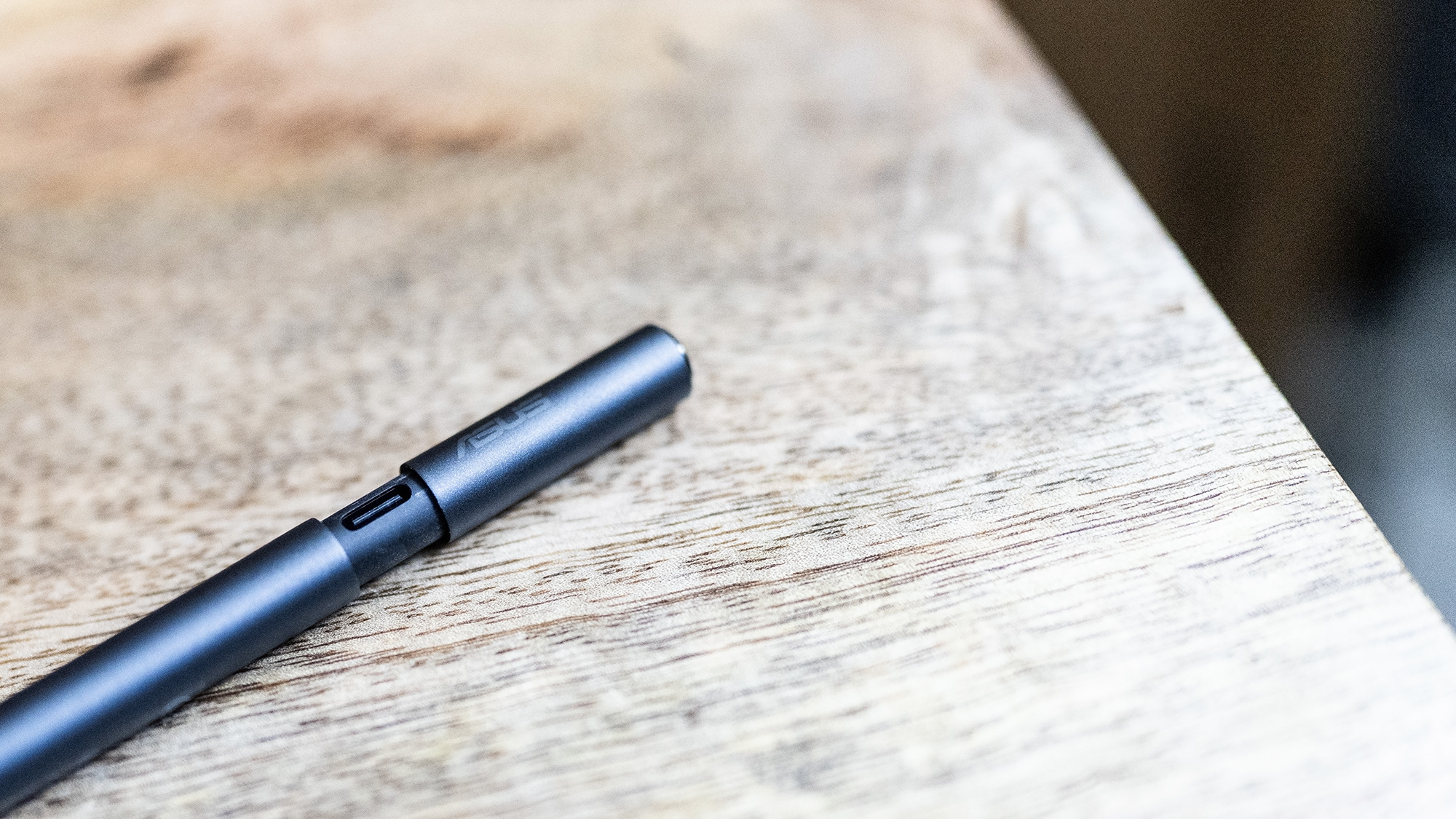
Benchmark scores
Geekbench 6 | Row 0 - Cell 1 |
CPU single core | 2954 |
CPU multi-core | 16052 |
GPU | 42519 |
Cinebench 2024 | Row 4 - Cell 1 |
CPU single core | 129 |
CPU multi-core | 730 |
GPU | Incompatible |
UL Procyon | Row 8 - Cell 1 |
AI image genaration | 2026 |
Office productivity | 256,000 |
Battery life | 10h 16m |
Topaz Video AI | App crashed |
Pugetbench for Photoshop | 7718 |
Pugetbench for DaVinci Resolve | Test failed |
ON1 Resize | 125,523ms |
Performance
Arrow Lake processors give a decent speed bump over their Meteor Lake predecessors, but CPU power isn’t the Zenbook Duo’s problem. It lacks the TOPS numbers to claim the Copilot+ badge, so while AI tools will work (though the neural network video scaling app we test with wouldn’t work at all, quitting to desktop and resulting in a blue screen of death when restarted) they’ll be slower than you might expect.
If only ASUS had been able to put a separate GPU chip into the Duo. With a bit more graphics power this would have been the perfect mobile Lightroom station. You do get the Ultra 9’s 16 CPU cores (6P, 8E, 2LPE) to work with, which means apps zip around and multi-tasking won’t slow it down, but denoising in Camera Raw can take a while with high-megapixel files, and you’re not going to be playing Cyberpunk 2077 on those glorious 2.8K screens at anything like high detail settings. In the Geekbench 6 benchmark, it beats the M4 MacBook Air in the multi-core CPU test, but loses to it in the single-core test. But the difference isn’t huge in either one. That’s a machine that costs a few hundred pounds less in a broadly similar configuration, though only comes with one screen.

None of this is to say that you can’t run creative apps on the Zenbook Duo. You absolutely can throw InDesign layouts around, build up intricately layered creations in Photoshop, edit video in DaVinci Resolve (though our testing with that app failed while rendering a 100Mbps, 4K, HEVC video file, which may have been too much for it - the laptop was still receiving firmware and driver updates during our testing, so it’s possible a future download could improve stability here) and lots more besides. It will just take a little longer than something with an Nvidia chip in it.
Still, at least we have the OLEDs. We’ve seen brighter screens, sure, but they’re still better than a lot of laptop displays, and with decent colour reproduction too: it showed our colourimeter a good time, whirling its skirts to reveal 100% sRGB coverage, with 96% of Adobe RGB and 98% of DCI-P3 too. It put out 366 nits of max brightness too, which isn’t as good as you’ll find from some other OLEDs, but beats a lot of laptop screens nonetheless.
The ZenBook Duo 2025’s battery life comes out at 10h 16m in our looping video test - that’s two hours less than the previous generation’s score, but it will still keep you going all day, especially if you use power-saving features or let it go to sleep at lunchtime. This test was only using one screen, so you may see the endurance dip if using both.

Price
This is an expensive laptop, coming in at $1,799.99/£2,099 at the time of writing. You could pick up two of the base-price MacBook Airs for the same cost, or many other entries on our big list of the best laptops for graphic design. Perhaps a massive gaming desktop would feel like a better use of the cash (or more)? When you’ve got it set up and are working away, enjoying the extra screen space from a portable machine, it feels like good value in a way that few other machines do. You’re getting something unusual, something that stands out, something that works well, and which is well designed and built. And that’s priceless.
Who is it for?
If you like to show off in a coffee shop then this is the perfect machine. It will undoubtedly draw admiring glances and penetrating questions from fellow laptop connoisseurs. Mostly, it’s for those who feel constricted by the current batch of laptops with screens that, despite being bright, colourful and high-res, are held back by their singularity. If your work needs regularly spill over onto a second monitor, then having an extra one you can take with you makes a whole lot of sense. You can always use it in standard laptop mode if you’re feeling shy.
Should I buy it?
Buy it if:
• You need the screen space
• You want to be the centre of attention
• You want something that feels different
Don’t buy it if:
• You need more GPU power
• Or want a Copilot+ machine
• Or a Mac
Also consider
Apple’s latest is incredibly well built, the screen is predictably great, and it's loaded with a bunch of ease-of-use features as well as Apple Intelligence.
The flagship of ASUS' ProArt range for creative professionals, the P16 comes with an OLED screen, Nvidia GPU, and up to 64GB of RAM.
Like the portable dual-screen idea but don’t want to buy a new laptop? These IPS panels are bigger than the Zenbook Duo’s, and offer a lot of flexibility.
out of 10
ASUS' gorgeous two-screened laptop returns for a 2025 refresh, and is as good as ever. That comes with a caveat though - there's still no discrete graphics chip in this baby - but if you can live with that then it’s a top-notch portable computing experience.

Ian Evenden has been a journalist for over 20 years, starting in the days of QuarkXpress 4 and Photoshop 5. He now mainly works in Creative Cloud and Google Docs, but can always find a use for a powerful laptop or two. When not sweating over page layout or photo editing, you can find him peering at the stars or growing vegetables.
You must confirm your public display name before commenting
Please logout and then login again, you will then be prompted to enter your display name.
